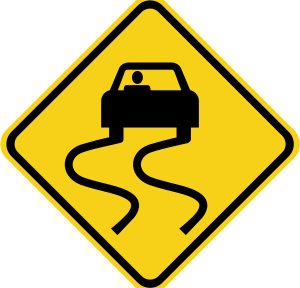
Meteorologists are calling for rain all day today and freezing rain later tonight. All this has NC bracing for icy roads and possible power outages by tomorrow morning.
Most of Central & Eastern NC are under a winter storm watch beginning Tues. evening until noon on Wednesday.
Freezing rain could produce up to a quarter of an inch of ice on surfaces. Officials say DOT plans to treat roads beginning at 10pm with salt and sand.
Stay tuned to The Light 103.9 for your latest weather updates.
Text “LIGHT” To 37890 for your chance at ticket giveaways and news before anyone else!…Standard Messaging Rates Apply
Here is a AAA video of what to do when driving in snow and ice:
Road Icing: Safety Tips to Remember
•Wait for conditions to improve.
The best way to avoid an accident on an icy road is to simply stay off the roads until the threat passes. Nothing can inconvenience you more than a wreck!
•Take it slow!
High speeds make it easy to lose control on ice and snow. Slowing down to below 45mph when icy roads are a threat is the second best way to avoid an accident.
You don’t have the skill to drive at normal speeds on icy roads.
A factor in many of the serious and fatal crashes is overconfidence in one’s abilities and/or equipment (traction control, antilock brakes, stability control, good tires). Some feel that they have sufficient experience in winter driving, and can therefore continue normally (at or above the speed limit). But a fishtail on ice that occurs at highway speeds is usually unrecoverable by even the most quick-witted and experienced drivers. Practicing slow-speed slides in parking lots is useless for what happens to a vehicle at highway speed. A person who enters a high-speed slide will quickly learn that it is something they can’t handle – but all too late.
•Wear your seat belt!
Even though wearing your seat belt should already be a no-brainer at all times, during the winter it’s even more critical. An alarming number of road ice fatalities occur with minor accidents where the vehicle occupants were not wearing seat belts.
•Pay attention to the weather.
Make the weather forecast part of your daily routine during the winter. Awareness of conditions will help you be more prepared. Read more about warning signs to watch for.
•Go easy on your brakes
Brake application is a common trigger of slides that result in a loss of vehicle control. ABS (antilock brakes) do not work well on ice and snow, and often will lock up your wheels regardless. Sliding wheels are uncontrollable, that is, steering input will not change the vehicle’s direction if the wheels are sliding.
•Turn into a slide
Turn your wheels in the direction that the rear of your car is sliding. It helps to look with your eyes where you want the car to go, and turn the steering wheel in that direction. It is easy to steer too far, causing the car to slide in the other direction. If this happens (called overcorrecting), you’ll need to turn in the opposite direction. Read more about correcting a slide.
•Icy road accidents happen in multiples
Your own accident is sometimes not the greatest threat to you – additional out-of-control vehicles often are. Read about what to do if you are in an accident on an icy road.
•Don’t stop for accidents or stranded vehicles along an icy roadway.
Being a Good Samaritan is a noble thing, but on an icy road, it can cause more problems than it solves. Parking on the side of an icy highway can cause passing drivers to brake and lose control, putting the lives of everyone involved in danger. Unless the stranded driver is in immediate danger, the best thing you can do is contact the authorities (call 911), who are equipped to safely block the road or divert traffic while a tow truck can do the job properly.
Source: ICYROADSAFETY.COM
LIKE The Light On Facebook To Keep Up With your favorite artist and celebrity news!















